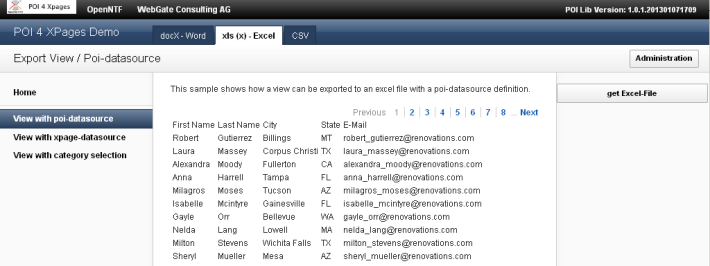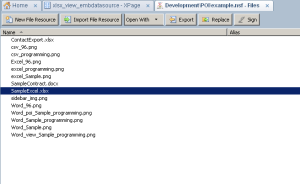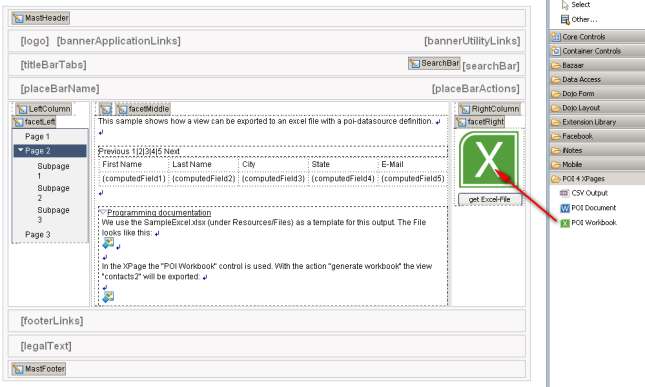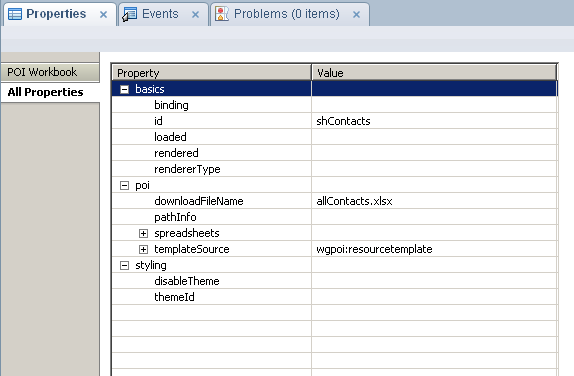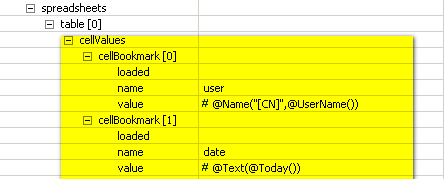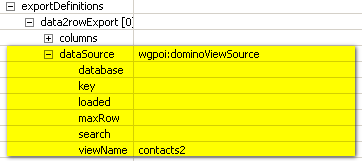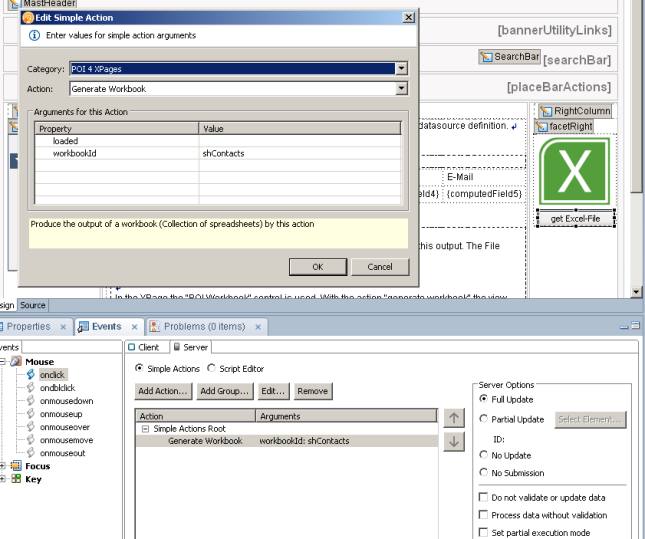Hi All
Only a few hours and I will travel with Roman, Peter and Andre to the IBMConnect2013. The last years “LotusSphere 2012” (the old name of the IBMConnect) was a game changer in my life. I meet great people like Niklas Heidloff, Philippe Riand, Martin Donnelly, Dan O’Conner and many more.
But these guys have inspired me to build myWebGate and POI 4 XPages.
We have greate news about both projects, but this post ist about POI 4 XPages. We have made some progresses on the project that we would like to share in the version 1.1.0:
- The POI 4 XPages supports now the version 3.9 of the brilliant Apache POI Project, which is the newest release
- We fixed some typos and a bug in the creation of Workbooks. If you try to export data to a sheet wich doesn’t exist on the exceltemplate and you choose “create” = “false”, the export fails. This was not the idea behind the “create”=”false” option. Now the export definition with this settings will be ignored, if the sheet doesn’t exist. (Marco Baumann has reported this issue at the gitHub.com)
- We implemented the POI – ListObjectDataSource which is designed to export the java.util.List<?> object in version 1.0.1 but we did make a mistake in the value definition. This values have to be assigned with a SSJS function, but our binding was against a value property. We fixed this with a new “MethodBinding” assignment (like the createObject function from the ObjectDataSource in the ExtLib) called “buildValues”. This means that “values” is deprecated and only for backwards compatibilty available
- With version 1.1.0 we introduce a brand new feature in the workbook and document controll. A binding which we called postGenerationProcess. This feature is really powerful, let me explain why.
postGenerationProcess – all power of apache poi in your hand:
POI 4 XPages build your Workbook or Document with the “generate….” function. But when the action is started, you don’t have access to the Workbook or Document object. “postGenerationProcess” change this. In the postGenerationProcess your SSJS / Java Code will be executed, right before the Workbook or Document is transmitted from the server to the client.
The follwowing code in the postGenerationProcess prints the name of the first sheet on a workbook to the server console:
print( workbook.getSheetAt(0).getSheetName() );
While we are calling the postGenerationProcess, the POI 4 XPages Code assign the current workbook to the variable workbook, or the current document to the variable xwpfdocument. This variable are representation of the the following apache poi classes:
workbook: org.apache.poi.ss.usermodell.Workbook -> javadoc
xwpfdocument: org.apache.poi.xwpf.usermodell.XWPFDocument -> javadoc
Imagine what you can do now, afert a document or a workbook is created!
Have Fun
Christian
Download POI4XPages here
